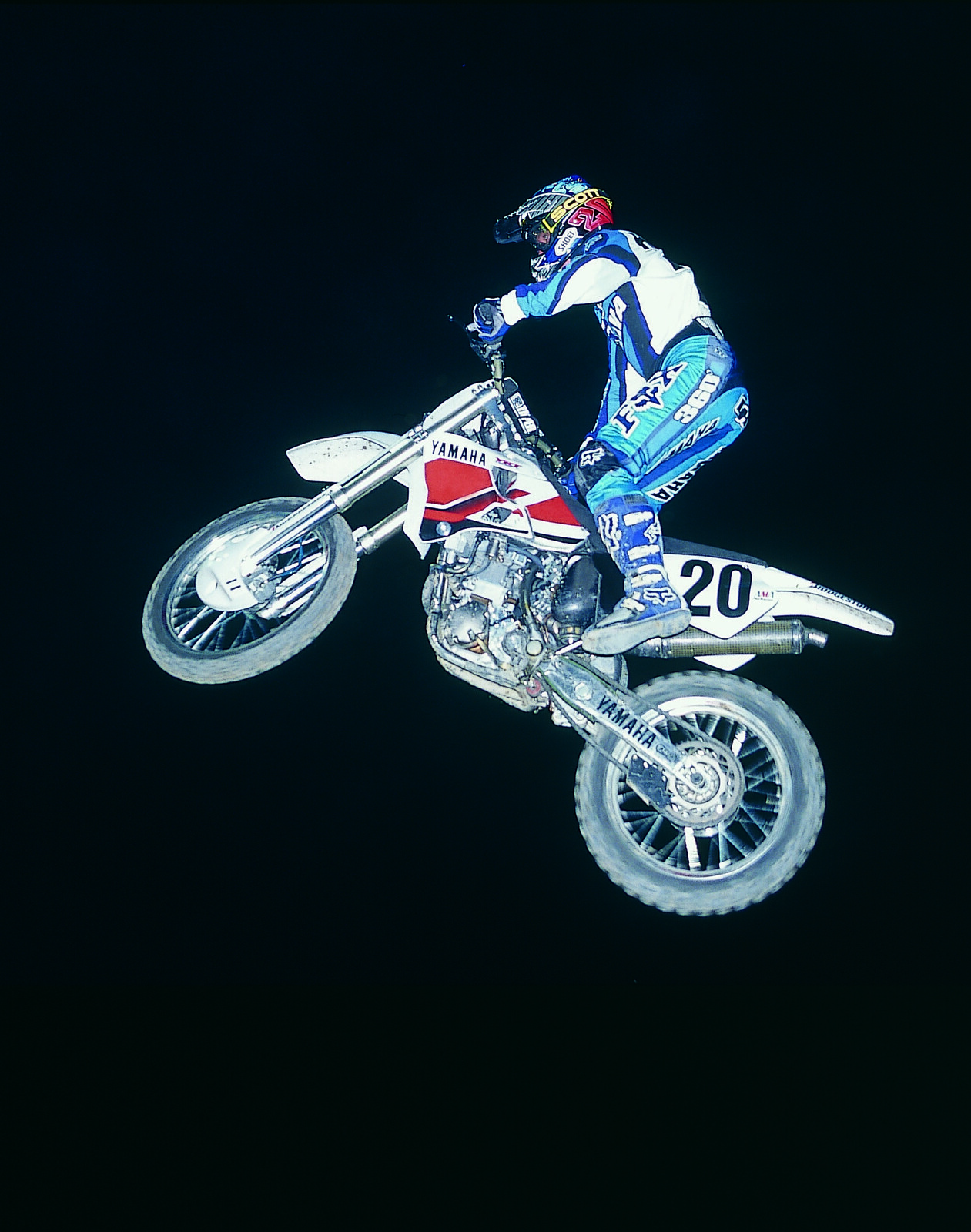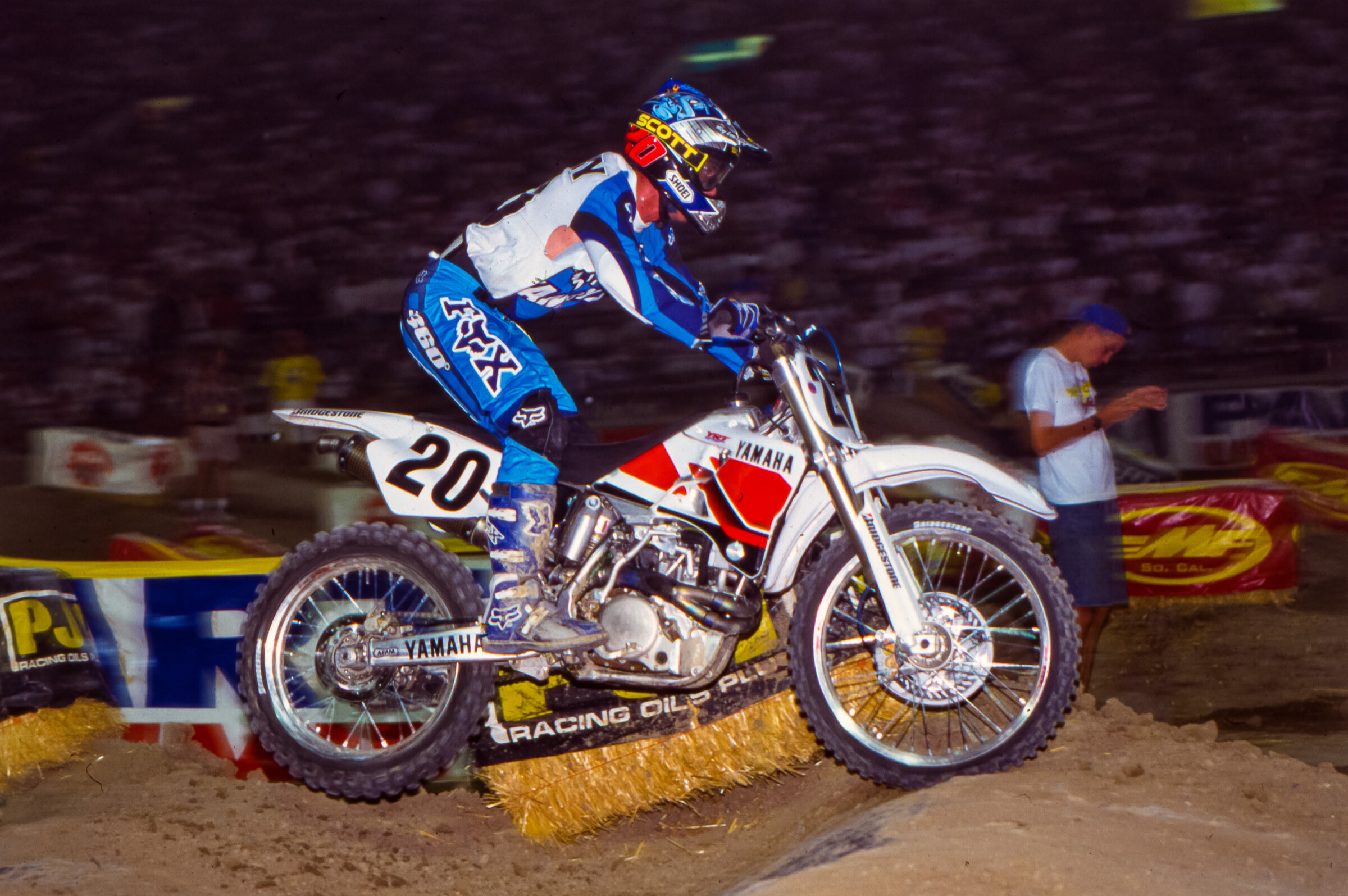Some inventions, tools, and techniques have advanced the sport of motocross significantly since their inception. The Racer X staff explains some of those advancements in this feature, “Next Level,” and this month we’re talking about something that’s had about as big of an effect on motocross as anything in history—the modern four-stroke.
There are many separate stories that comprise the legend of the development of Yamaha’s YZ400F, the first competitive production four-stroke, and there simply isn’t room here to tell them all. So, for this version of Next Level, we’re focusing on the testing and development angle of the revolutionary machine, of which the seeds can be traced back to an AMA rule that, at the time, allowed 550cc (and below) four-strokes to compete in the 250 class, and four-strokes up to 250cc to compete in the 125 class.
“I think the stereotype of a heavy, low performing, four-stroke had a long history. People really didn’t know or expect anything more,” says Doug Dubach, who played a huge role in the development of the YZ400F. “Most consumers were happy with their current two-stroke. Making a competition four-stroke was a big risk."
Dubach was so heavily involved with the project that he says there are still some people who think he built the first YZ400 in his garage. Surprisingly though, it wasn’t something Dubach, who was already riding a preproduction model back in 1996, was initially a fan of.
“Hearing about it, I wasn’t motivated about it. I wasn’t a big fan of it at first. When I thought of it, I just thought of the guys trying to turn XR400s into race bikes,” Dubach recalls. “But the first time I saw the bike, it was good! We rode at Carlsbad, which was kind of cherry picking because it was the best place for it, being dry and slippery. That first time out I thought, ‘Wow, this could be something!’ It wasn’t where it needed to be, to be released into production, but we’d test it and see it again roughly every three months. About the third time I thought, ‘Wow, this is going to be the next bike everyone is going to be racing.’”
Dubach’s prediction was dead-on. Longtime motocross fans will recall Doug Henry riding the YZM400 in 1997 and shocking the world by winning the Las Vegas supercross on it that same year. Later, the production YZ400F would show up in dealerships as a 1998 model, but the development of the production bike was almost completely separate from the creation of the YZM400, which is its own story altogether. The production machine was created by a team headed by a brilliant Japanese engineer named Yoshiharu Nakayama. He would later go onto create the YZ250F at home on his own time, but that too is another story.
“I spent a lot of time with Nakayama-San over the course of the first two years of this project,” Dubach says. “He was a very passionate man who clearly had a vision of what the modern four stroke has become. I have to imagine, as I’m only guessing about his motivation, that he was looking at some of the four stroke enduro bikes in Europe that were transitioning into motocross bikes and decided that this could be the way forward in performance. It took a passionate man with a big vision to change the motocross world forever!”
The development of the machine wasn’t a total cakewalk, of course, even with someone like Nakayama at the helm. Providing an additional challenge was the goal of not just making it good for a four-stroke, but better than any other bike, period.
“The early target (Doug Henry’s factory bike) was to create the best race bike on the track. Obviously, the next step was to sell that to the public. We weren’t just trying to make the best four stroke, we were trying to make the best bike,” Dubach says. “We tested a lot back then because it was such a tall hill to climb. Get the weight down, improve durability, increase performance. We wanted to get it to the point where there were no negatives. As fun as two-strokes are, their light weight is about the only advantage they have. Every other characteristic of the modern four-stroke is better. And that was our challenge, was to not have any buts— ‘Well it’s good, but…’ We wanted it to be the best race bike on the track.”

The bike wasn’t without hiccups, but its ability to win championships was proven immediately when Henry won the 1998 250 (now the 450 Class) National Motocross Championship. But even after that the bike continued to evolve rapidly.
“We [Yamaha] caught the other manufacturers by surprise, so we knew they would learn from us and release their best technology as soon as possible,” Dubach says. “We had to keep pushing ahead. I was also surprised how quickly we saw a prototype 250F.”
Nowadays the script has now been flipped entirely compared to how things were roughly 25 years ago. Once considered a total joke for motocross, four-strokes now dominate motocross and supercross, and the occasional rider who lines up on a two-stroke is at a huge disadvantage before the gate even drops. Whether you love them or hate them, there’s no denying the colossal impact the modern four-stroke has had on our sport, which truly makes them Next Level.





